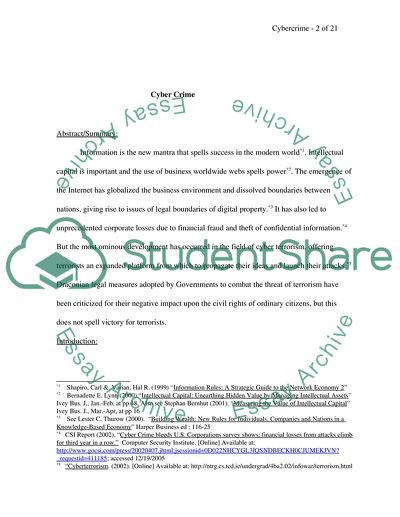Cite this document
(“Cyberlaw Research Essay Example | Topics and Well Written Essays - 3500 words”, n.d.)
Cyberlaw Research Essay Example | Topics and Well Written Essays - 3500 words. Retrieved from https://studentshare.org/information-technology/1535450-cyberlaw-research
Cyberlaw Research Essay Example | Topics and Well Written Essays - 3500 words. Retrieved from https://studentshare.org/information-technology/1535450-cyberlaw-research
(Cyberlaw Research Essay Example | Topics and Well Written Essays - 3500 Words)
Cyberlaw Research Essay Example | Topics and Well Written Essays - 3500 Words. https://studentshare.org/information-technology/1535450-cyberlaw-research.
Cyberlaw Research Essay Example | Topics and Well Written Essays - 3500 Words. https://studentshare.org/information-technology/1535450-cyberlaw-research.
“Cyberlaw Research Essay Example | Topics and Well Written Essays - 3500 Words”, n.d. https://studentshare.org/information-technology/1535450-cyberlaw-research.


